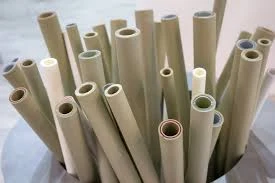
-
 Afrikaans
Afrikaans -
 Albanian
Albanian -
 Amharic
Amharic -
 Arabic
Arabic -
 Armenian
Armenian -
 Azerbaijani
Azerbaijani -
 Basque
Basque -
 Belarusian
Belarusian -
 Bengali
Bengali -
 Bosnian
Bosnian -
 Bulgarian
Bulgarian -
 Catalan
Catalan -
 Cebuano
Cebuano -
 China
China -
 China (Taiwan)
China (Taiwan) -
 Corsican
Corsican -
 Croatian
Croatian -
 Czech
Czech -
 Danish
Danish -
 Dutch
Dutch -
 English
English -
 Esperanto
Esperanto -
 Estonian
Estonian -
 Finnish
Finnish -
 French
French -
 Frisian
Frisian -
 Galician
Galician -
 Georgian
Georgian -
 German
German -
 Greek
Greek -
 Gujarati
Gujarati -
 Haitian Creole
Haitian Creole -
 hausa
hausa -
 hawaiian
hawaiian -
 Hebrew
Hebrew -
 Hindi
Hindi -
 Miao
Miao -
 Hungarian
Hungarian -
 Icelandic
Icelandic -
 igbo
igbo -
 Indonesian
Indonesian -
 irish
irish -
 Italian
Italian -
 Japanese
Japanese -
 Javanese
Javanese -
 Kannada
Kannada -
 kazakh
kazakh -
 Khmer
Khmer -
 Rwandese
Rwandese -
 Korean
Korean -
 Kurdish
Kurdish -
 Kyrgyz
Kyrgyz -
 Lao
Lao -
 Latin
Latin -
 Latvian
Latvian -
 Lithuanian
Lithuanian -
 Luxembourgish
Luxembourgish -
 Macedonian
Macedonian -
 Malgashi
Malgashi -
 Malay
Malay -
 Malayalam
Malayalam -
 Maltese
Maltese -
 Maori
Maori -
 Marathi
Marathi -
 Mongolian
Mongolian -
 Myanmar
Myanmar -
 Nepali
Nepali -
 Norwegian
Norwegian -
 Norwegian
Norwegian -
 Occitan
Occitan -
 Pashto
Pashto -
 Persian
Persian -
 Polish
Polish -
 Portuguese
Portuguese -
 Punjabi
Punjabi -
 Romanian
Romanian -
 Russian
Russian -
 Samoan
Samoan -
 Scottish Gaelic
Scottish Gaelic -
 Serbian
Serbian -
 Sesotho
Sesotho -
 Shona
Shona -
 Sindhi
Sindhi -
 Sinhala
Sinhala -
 Slovak
Slovak -
 Slovenian
Slovenian -
 Somali
Somali -
 Spanish
Spanish -
 Sundanese
Sundanese -
 Swahili
Swahili -
 Swedish
Swedish -
 Tagalog
Tagalog -
 Tajik
Tajik -
 Tamil
Tamil -
 Tatar
Tatar -
 Telugu
Telugu -
 Thai
Thai -
 Turkish
Turkish -
 Turkmen
Turkmen -
 Ukrainian
Ukrainian -
 Urdu
Urdu -
 Uighur
Uighur -
 Uzbek
Uzbek -
 Vietnamese
Vietnamese -
 Welsh
Welsh -
 Bantu
Bantu -
 Yiddish
Yiddish -
 Yoruba
Yoruba -
 Zulu
Zulu
grp dual lamination products for enhanced durability and ...
Enhancing Durability with GRP Dual Lamination Products
In today’s engineering and construction industries, the need for materials that offer superior durability while minimizing maintenance costs is more pressing than ever. Glass Reinforced Plastic (GRP) dual lamination products have emerged as a revolutionary solution, providing enhanced durability for a variety of applications. This article explores the advantages of GRP dual lamination, its applications, and how it can address modern material challenges.
What is GRP Dual Lamination?
GRP dual lamination refers to a composite material that combines the benefits of glass fibers with a robust thermoset resin. In a dual lamination process, two layers of GRP are fused together to create a more resilient structure. This dual-layer system significantly enhances the mechanical properties of the material, making it an ideal choice for demanding environments. The key components of this process include
1. Glass Fiber Reinforcement The inclusion of glass fibers provides tensile strength and rigidity, allowing the material to withstand heavy loads while remaining lightweight.
2. Thermoset Resins These resins offer excellent resistance to chemicals, moisture, and UV radiation. They cure into a hardened state, making the material less susceptible to deformation and wear over time.
Advantages of GRP Dual Lamination Products
1. Enhanced Mechanical Strength
The dual lamination technique improves the overall mechanical properties of GRP products. The combination of two layers enhances load-bearing capabilities, making it suitable for structural applications where strength is paramount. Industries such as construction, automotive, and aerospace benefit from this reinforced durability.
2. Corrosion Resistance
One of the standout features of GRP dual lamination products is their resistance to corrosive environments. Unlike traditional metals, GRP does not rust, making it ideal for use in chemical processing plants, marine applications, and wastewater treatment facilities. The ability to withstand various chemicals ensures longevity and reliability in hostile environments.
grp dual lamination products for enhanced durability and ...

3. Lightweight Characteristics
Despite its enhanced strength, GRP remains considerably lighter than metals and other traditional materials. This characteristic not only aids in reducing transportation costs but also simplifies installation processes. The lightweight nature of GRP allows for easier handling and can lead to less structural support being required in construction applications.
4. Low Maintenance Requirements
GRP dual lamination products are fundamentally designed to last. Their resistance to environmental factors translates to lower maintenance needs over the product’s lifecycle. This aspect is particularly attractive for industries where maintenance downtime can significantly impact productivity and profitability.
5. Versatility in Applications
From electrical enclosures to architectural components, the applications of GRP dual lamination products are extensive. Industries such as telecommunications, construction, and renewable energy have recognized the potential of these materials. For example, in solar panel mounting systems, GRP can enhance durability against environmental stressors while providing an aesthetically pleasing finish.
Environmental Considerations
Beyond their mechanical benefits, GRP dual lamination products offer environmental advantages as well. The longevity and durability of these materials contribute to a reduced carbon footprint over time. Less frequent replacements mean lower resource consumption and waste generation. Advanced recycling techniques for GRP are also emerging, further promoting sustainability.
Conclusion
In conclusion, GRP dual lamination products stand at the forefront of modern material technology, offering enhanced durability and performance for a diverse range of applications. As industries continue to seek solutions that balance strength, weight, and longevity, these GRP products provide compelling advantages. With their unique properties, they not only meet the demands of today’s construction and manufacturing environments but also contribute to sustainable practices. As the shift towards advanced materials continues, GRP dual lamination products are poised to play a critical role in shaping the future of engineering and construction.









